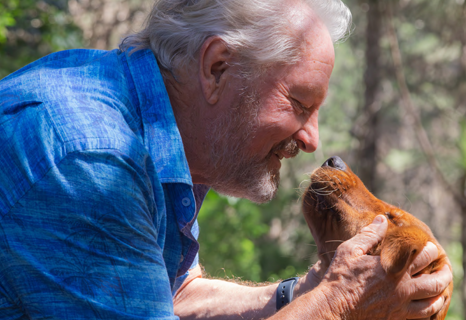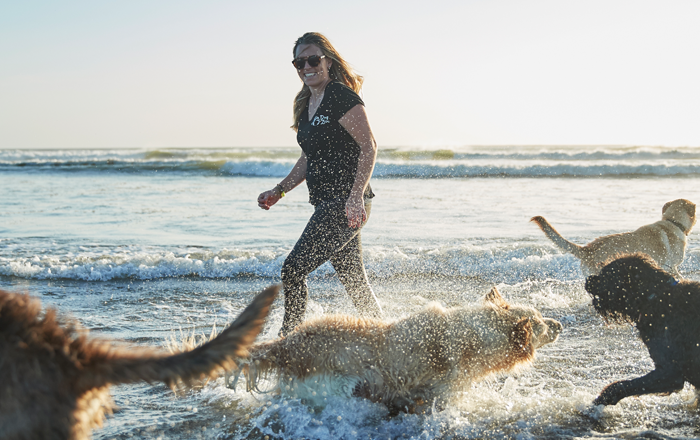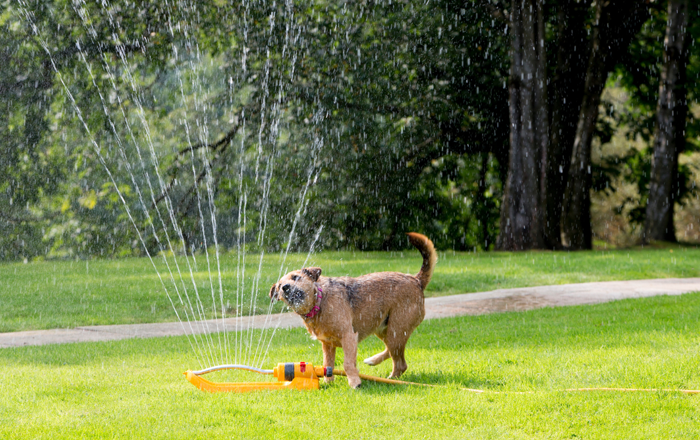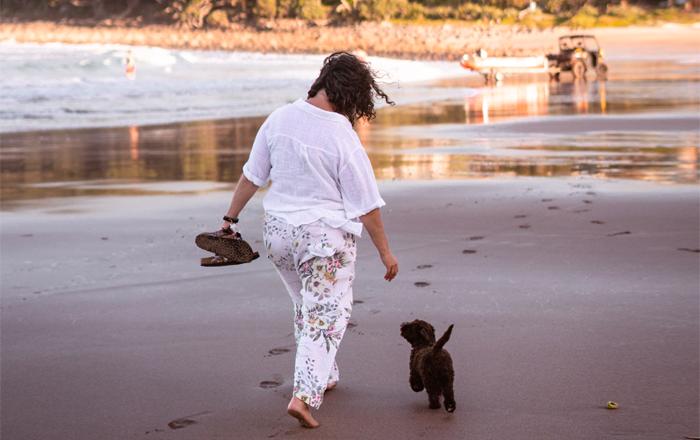Keeping your pet happy when it’s hot outside
Often hot summer days require us to ease off on our dog’s outdoor exercise routine, however it’s absolutely essential that they do still get an appropriate amount of exercise and mental stimulation on hot days! Dogs that aren’t having these basic needs met can exhibit concerning traitsIf your dog isn’t getting enough exercise or mental stimulation, they may start to exhibit behavioural and physical signs. Here are some common ones to look out for:
- Destructive behaviour such as digging, scratching doors, chewing furniture or ripping up cushions
- Excessive barking or whining
- Restlessness or hyperactivity, seeming unable to settle, pacing or following you around
- Weight gain
- Increased anxiety, manifesting as pacing, trembling, being more easily startled, panting excessively or showing other obsessive behaviours
- Extreme overexcitement when it is playtime or walk time, indicating pent-up energy
- Difficulty settling down or sleeping
- Depression or lethargy, though this seems counter-intuitive, some dogs that aren’t getting enough activity will actually sleep more, appear withdrawn or seem uninterested in play
- Attention-seeking behaviour such as pawing you, nudging you, barking at you, bringing you toys repeatedly or otherwise demanding your attention
- Obsessive behaviours such as chasing their tail, biting their paws, suckling a cushion or licking the same spot over and over
- Lack of obedience, an under stimulated dog may become difficult to manage or less responsive to commands. Often people describe the change as their dog just seeming ‘naughtier’.

Mark Vette is a world-renowned Animal Behaviourist, Zoologist and Trainer. He brings together a unique combination of academic studies with 40 years of applied clinical animal behaviour consulting and treatment. Mark is a member of the International Association of Animal Behaviour Consultants. This article was written by Mark and the views expressed are his own.
How much is enough?
All dogs need regular physical activity and enrichment to be happy and healthy, through walks, games, interactive toys, training sessions, socialisation and playtime.
However every dog is different, so you’ll need to tailor the activity levels based on their breed, age and individual needs. If you’re not sure, do some research on your dog’s breed traits including their energy levels and intelligence. Dogs with high energy and intelligence (such as working breeds like border collies) will need a huge amount of activity and mental stimulation, while dogs with lower energy and a lesser need for brain work will require less.
I can’t give you a black and white answer on this one, it’s best to do some research then monitor your individual dog for signs that they are content or not (see list above!).


Summer enrichment ideas
If your normal walking and play routine is disrupted by summer heat, here are some options that will help keep your dog well exercised and well stimulated without risking ill-effects from the warmer weather. If you’re looking for enrichment ideas for cats check out this article on indoor cat games.
Water play
If your dog loves water, at-home water play is an excellent option! Get a paddling pool or set up a sprinkler for your dog to enjoy. For even more fun, invite a doggy friend around to enjoy the water with your dog - they can play together, while having an easy way to keep cool!
Frozen treats
Pets will appreciate something cool to help them beat the summer heat, and frozen treats can also help keep them occupied! Some of my favourites include:
- Blend frozen bananas, peanut butter and greek yoghurt to make doggy ice cream
- Freeze your dog’s normal kibble in a bowl full of water or low salt broth, it will take them ages to lick and eat their meal
- Freeze a Kong toy stuffed with wet canned food, peanut butter or mashed banana for a cooling enrichment treat
- Freeze your dog’s favourite toy in an ice cream container of water, and watch the fun and confusion as they try to free it
Engage their senses
A dog’s sense of smell is powerful, and using it is mentally enriching for them. Play scent games inside when the weather is hot out, for example:
- Hide a treat or their favourite toy, then encourage them to “find it!” and praise profusely and offer a treat when they find it. Start by letting them see where you place it so they learn to understand the game, then gradually increase the difficulty of the hiding spot
- Hide a treat under one of three cups, mix the cups up then let them "choose" (with their nose or paw) a cup that you turn over to reveal if they found the treat
- Ask your dog to “Wait” then hide yourself in the house. When you’re ready, call your dog to “Find me!” and praise when they find your hiding spot
Indoor exercise
Set up a mini obstacle course in your living room or hallway using items like cushions, chairs, and tunnels. Play a game of fetch with a soft toy or ball, ensuring that your pet gets plenty of exercise without overheating.
Interactive toys and puzzles
Interactive toys are an excellent way to keep pets busy when it's too hot to go outside. These toys challenge your pet mentally, making them think, problem-solve, and stay entertained. Try puzzle feeders so your dog has to work to get the reward, you can buy them or make your own at home using general household stuff like muffin tins, tennis balls, hand towels and old recycling boxes. Scratch board toys (your dog scratches a rough top to get to food underneath) are enriching and file your dog’s nails at the same time!
Rotate toys
Pets can lose interest in toys if they have constant access to all of them. To keep things fresh, try rotating their toys every few days. Bring out a different set of toys, and put the others away. This simple trick keeps them excited about their playthings as if they’re brand new.
Training sessions
Indoor training sessions are a great way to keep your pet engaged and provide mental stimulation! Spend 10-15 minutes each day working on basic commands, or teaching new tricks. This not only provides a mental challenge to help exercise your dog’s brain, it also strengthens the bond between you and will result in better behaviour - win-win!
Stay cool out there!
Summer is a wonderful time of year, and by making some simple changes to the way we exercise and engage with our dogs, we can ensure they stay both happy and healthy throughout the summer months.

Always consult your vet on the best way to look after your pet. And to avoid unexpected costs, make sure your pet is insured.
Have a look at our pet insurance plans to choose the right insurance plan for your pet.
